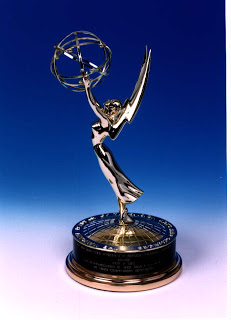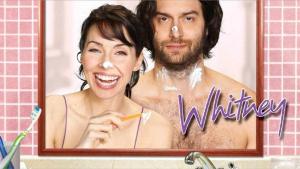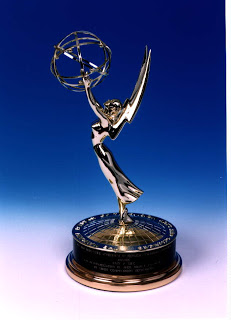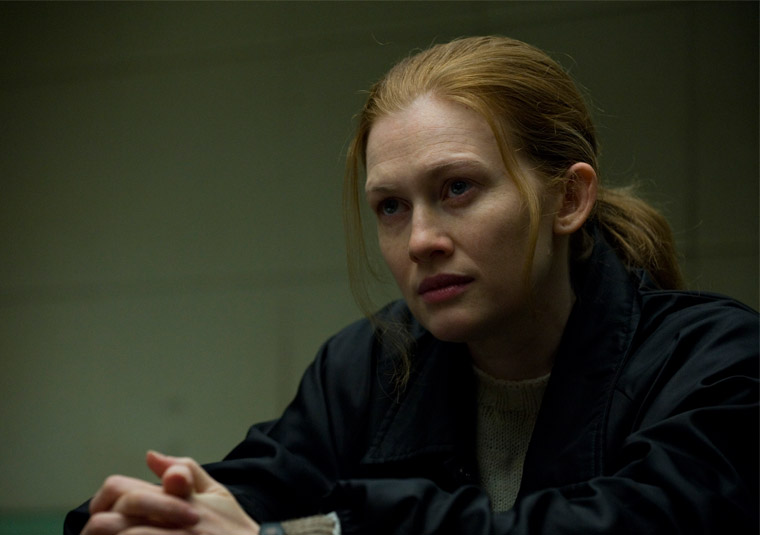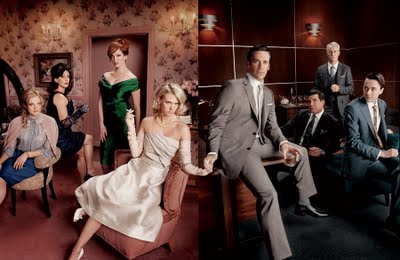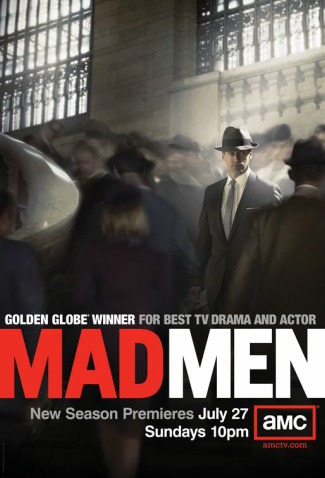 |
| Mireille Enos as Sarah Linden in The Killing |
Who killed Rosie Larsen? This is the pivotal question that motivates The Killing. While a murder mystery, the true catalyst of the show resides in the nuanced characters, particularly steely homicide detective Sarah Linden.
Often I lament the gender inequity in films and TV shows, bemoaning their flagrant displays of sexism. Many gendered problems could be solved if movies and series employed more female writers, directors or producers. Too often, when you have a staff of all white males, that’s what you see on-screen: all white male characters. That’s what’s so exhilarating about The Killing. Not only does the show boast a predominantly female crew, numerous female characters exist individual and distinct from one another. We see the plot told from a female perspective.
Based on the Danish TV series
Forbrydelsen (The Crime), the gritty series premieres with Linden, played superbly by Emmy-nominated
Mireille Enos, jogging in the woods. It’s her last day in the Seattle police department as she’s moving with her son, Jack, to marry her fiancé in California. But she gets pulled back in to her work in homicide by the murder of teenager Rosie Larsen.
Unlike many other crime shows, the plot continually shifts from the murder investigation to Detective Linden’s home life to how Rosie’s family handles their grief to a local mayoral campaign. Through the unfolding case, we see how grief affects each of the characters differently. Raising themes of misogyny, racism and xenophobia, the show uniquely focuses on how a tragedy affects a family and ultimately how those ripples affect a community.
Linden’s stoic and quiet reserve yields a driven detective. She pensively surveys crime scenes, taking it all in, absorbing every detail. When questioning witnesses, she isn’t typically brash or bold, preferring a subtle approach. When her partner Stephen Holder (Joel Kinnaman) brags about finding the potential crime scene “the cage,” Linden warns him, “Assumptions are your enemy.” Holder acts impulsively, while Linden remains cool and clear-headed. Yet we learn she possesses a tendency to compulsively obsess over cases, letting them consume and unhinge her life, even to the point of jeopardizing custody of her son.
While I revere clever dialogue in a film or TV show, an adept actor reveals a character’s inner thoughts and emotions through their body language and facial expressions; never having to utter a word. Enos does this superbly, a testament to her acting abilities. She revealed in an AMC interview that
her character’s silence is what she enjoys most:
It’s kind of my favorite part of this role — how much of this story is told just through Sarah thinking and letting the audience sit with her in her thoughts.
The female leads are very human and very real and very flawed, yet are good cops. Maybe that’s the difference: women are interested in creating real female leads.
I’m thrilled to see a fully formed, realistic female role. The role isn’t groundbreaking, following in the footsteps of the stellar Helen Mirren in Prime Suspect, The Closer, Saving Grace, Cold Case, Rizzoli & Isles, Cagney & Lacey. All of these shows’ characters face difficulties: sexism, hostile work environments, alcoholism, strained personal relationships due to their demanding careers. But Linden is unique in that she’s a single mother.
Throughout the series, we witness Linden struggling to juggle her consuming career with her role as a mom. In one scene, Linden has to leave a crime scene to fetch Jack from school after he’s kicked out for smoking. In another scene, Linden looks crushed when Jack complains that she cares more about the murdered victims than him. In another episode, she talks about how she yearns for him to be happy again, hoping the remedy lies in a “better life” in California. We alternately see her disciplining and guiding him, all with a rough tenderness.
In the fantastic episode, “The Missing,” we see Linden’s insecurities about how her troubled childhood might affect her parenting abilities when her son goes missing. Actor
Enos drew on her own experiences as a mother to enhance her character’s role, particularly her character’s empathy for Mitch Larsen, Rosie’s grief-stricken mother, played by the perpetually badass
Michelle Forbes, in a devastating performance.
Many single mothers are blamed at best, vilified at worst. So it’s refreshing to watch a TV show, particularly a crime drama, where the lead character is an accomplished single mom striving to keep her son out of trouble all while maintaining her demanding career.
Linden’s unyielding dedication to her job strains her romantic relationship as well. Initially, her fiancé Rick doesn’t make her choose between her job and their relationship. Exasperated, he waits for her to wrap up the case as she’s supposed to have already joined him in California. SPOILER!! -> As their relationship begins to crumble, Rick eventually returns to California without her after Linden chooses to stay in Seattle. <-END SPOILER!! It kind of pissed me off because men never seem forced to make this choice. It’s always the woman expected to follow a man, uprooting her life.
For those of us who lament the lack of female actors, writers and directors and stories told from women’s perspectives, here’s a show containing all those traits. Many reviewers
spewed vitriol after the season 1 finale, outraged that we didn’t find out who killed Rosie Larsen. But they’re missing the whole point. Yes, it’s a whodunit. But that’s not the crux of the show; it’s merely the vehicle in which to reveal the characters’ compelling stories.
The Killing depicts subtle portrayals of real, flawed women (and men), haunted by their past pain. While interesting male characters exist, the show doesn’t merely revolve around them. Rather it orbits a determined and resolute woman, unrelenting in her pursuit of justice.
Megan Kearns is a blogger, freelance writer and activist. A feminist vegan, Megan blogs at The Opinioness of the World, where she writes about gender in pop culture, sexism in the media, reproductive justice and living vegan. Her work has also appeared at Arts & Opinion, Italianieuropei, Open Letters Monthly, and A Safe World for Women. She earned her B.A. in Anthropology and Sociology and a Graduate Certificate in Women and Politics and Public Policy. Megan lives in Boston with her diva cat and more books than she will probably ever read in her lifetime.
